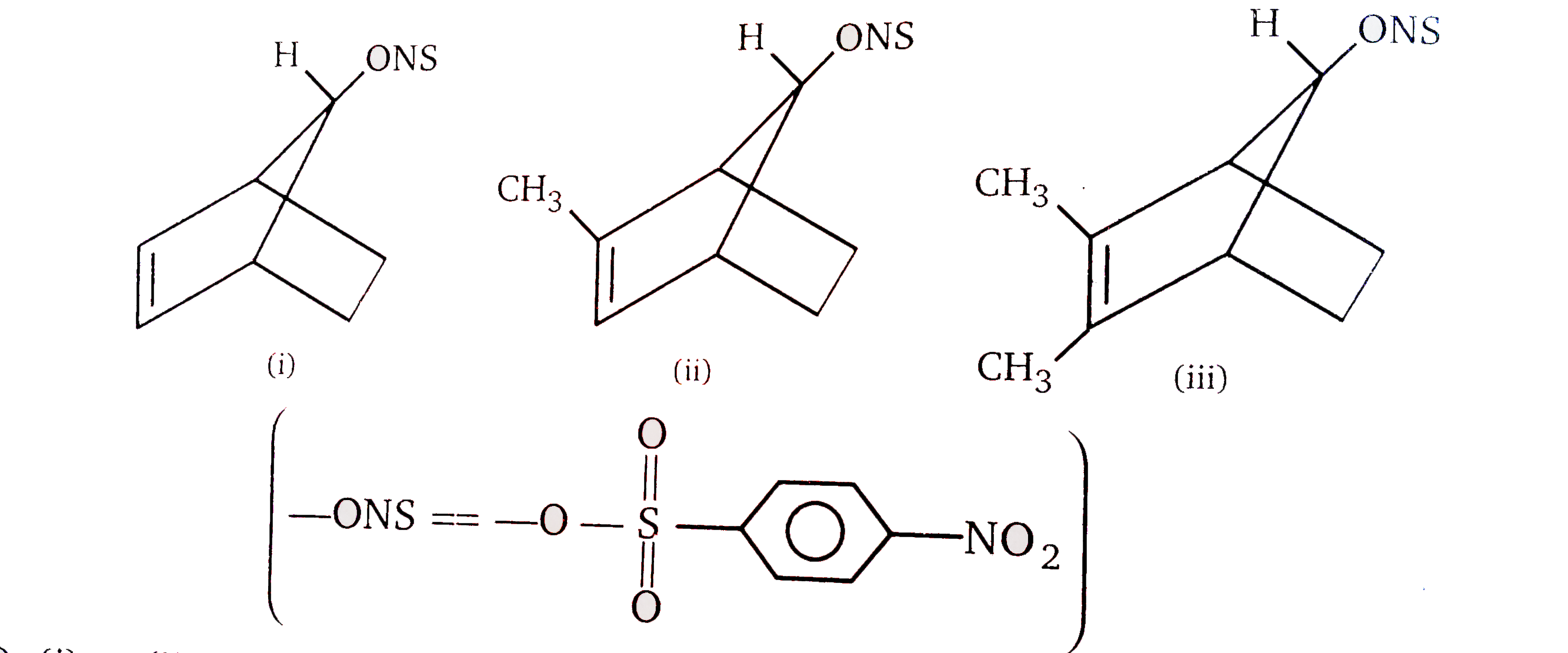On increasing the pressure three fold, the rate of reaction of 2H2S+O2→products would incerease
3 times
39times
12 times
27 times
The correct Answer is:D
To solve the problem of how the rate of reaction changes when the pressure is increased threefold for the reaction 2H2S+O2→products, we can follow these steps:
Step 1: Write the Rate Law
For the reaction 2H2S+O2→products, the rate law can be expressed in terms of the concentrations (or partial pressures) of the reactants. The rate law is given by:
Rate=k(H2S)2(O2)
Where k is the rate constant.
Step 2: Convert Concentrations to Partial Pressures
Since we are dealing with gases, we can express the rate in terms of partial pressures instead of concentrations:
Rate=k(PH2S)2(PO2)
Where PH2S and PO2 are the partial pressures of hydrogen sulfide and oxygen, respectively.
Step 3: Determine the Effect of Increasing Pressure
If we increase the pressure of both H2S and O2 threefold, we can express the new pressures as:
P′H2S=3PH2S
P′O2=3PO2
Step 4: Substitute the New Pressures into the Rate Law
Now, we substitute the new pressures into the rate law to find the new rate:
New Rate=k(P′H2S)2(P′O2)=k(3PH2S)2(3PO2)
Step 5: Simplify the Expression
Now, we simplify the expression:
New Rate=k(9P2H2S)(3PO2)=27k(PH2S)2(PO2)
Thus, the new rate can be expressed in terms of the original rate:
New Rate=27×Original Rate
Conclusion
Therefore, when the pressure is increased threefold, the rate of the reaction increases by a factor of 27.
Final Answer
The rate of reaction increases to 27 times its original rate.
---
For the reaction 2H2S+O2→products, the rate law can be expressed in terms of the concentrations (or partial pressures) of the reactants. The rate law is given by:
Rate=k(H2S)2(O2)
Where k is the rate constant.
Since we are dealing with gases, we can express the rate in terms of partial pressures instead of concentrations:
Rate=k(PH2S)2(PO2)
Where PH2S and PO2 are the partial pressures of hydrogen sulfide and oxygen, respectively.
If we increase the pressure of both H2S and O2 threefold, we can express the new pressures as:
P′H2S=3PH2S
P′O2=3PO2
Now, we substitute the new pressures into the rate law to find the new rate:
New Rate=k(P′H2S)2(P′O2)=k(3PH2S)2(3PO2)
Now, we simplify the expression:
New Rate=k(9P2H2S)(3PO2)=27k(PH2S)2(PO2)
Thus, the new rate can be expressed in terms of the original rate:
New Rate=27×Original Rate
Therefore, when the pressure is increased threefold, the rate of the reaction increases by a factor of 27.
The rate of reaction increases to 27 times its original rate.
Topper's Solved these Questions
- CHEMICAL KINETICS BOOK - MHTCET PREVIOUS YEAR PAPERS AND PRACTICE PAPERSCHAPTER - CHEMICAL KINETICS EXERCISE - Exercise 2
84 Videos
- CHEMICAL KINETICS BOOK - MHTCET PREVIOUS YEAR PAPERS AND PRACTICE PAPERSCHAPTER - CHEMICAL KINETICS EXERCISE - MHT CET CORNER
20 Videos
- CHEMICAL KINETICS BOOK - MHTCET PREVIOUS YEAR PAPERS AND PRACTICE PAPERSCHAPTER - CHEMICAL KINETICS EXERCISE - MHT CET CORNER
20 Videos
- BIOMOLECULES BOOK - MHTCET PREVIOUS YEAR PAPERS AND PRACTICE PAPERSCHAPTER - BIOMOLECULES EXERCISE - MHT CET CORNER
24 Videos
- CHEMICAL THERMODYNAMICS AND ENERGETICBOOK - MHTCET PREVIOUS YEAR PAPERS AND PRACTICE PAPERSCHAPTER - CHEMICAL THERMODYNAMICS AND ENERGETICEXERCISE - MHT CET Corner
40 Videos
Similar Questions
Knowledge Check
Relative rate of reaction with H2O
 A(I)>(II)>(III)B(II)>(I)>(III)C(III)>(II)>(I)D(III)>(I)>(II)
A(I)>(II)>(III)B(II)>(I)>(III)C(III)>(II)>(I)D(III)>(I)>(II)What is the product of the reaction of H2O2 with Cl2?
AO2+HOClBHCl+O2CH2O+HClDHCl+H2In the reaction, H2S+H2O2→S+2H2O
AH2S has been oxidisedBSO2 has been oxidisedCH2S is the oxidising agentDSO2 is the reducing agent.
If the concentration of the reactants in the elementary reaction 2A + B → C + D is increased three folds, the rate of the reaction will be increased by:
View SolutionThe product of reaction o f1-butyne with HgSO4+H2SO4 would be
View SolutionThe main products formed by the reaction of N2O5andH2O2 are
View SolutionIn the reaction , 2KO2+2H2O→ Product the products are -
View SolutionIn the reaction , Na2O2+2H2O→ Product the products are -
View Solution
